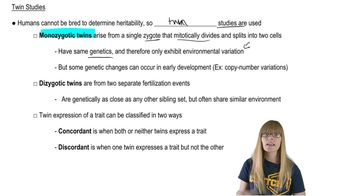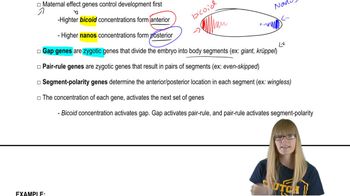Here are the essential concepts you must grasp in order to answer the question correctly.
Identity by Descent (IBD)
Identity by descent refers to the genetic relationship between individuals who inherit the same segment of DNA from a common ancestor. This concept is crucial in genealogical studies as it helps determine how closely related two individuals are based on shared genetic material. IBD segments can indicate familial connections and are essential for understanding inheritance patterns in populations.
Recommended video:
Haplotypes
A haplotype is a group of genes or DNA variations that are inherited together from a single parent. In genetic analyses, haplotypes are preferred over individual Short Tandem Repeats (STRs) because they provide a more comprehensive view of genetic relationships. By examining larger segments of chromosomes, researchers can better identify shared ancestry and the extent of genetic similarity between individuals.
Chromosomal Segments vs. STRs
Using segments of chromosomes, or haplotypes, rather than individual STRs allows for a more accurate assessment of genetic relationships. STRs can vary significantly among individuals and may not reflect shared ancestry effectively. In contrast, haplotypes encompass multiple genetic markers, providing a clearer picture of lineage and enhancing the reliability of genealogical analyses.
Recommended video:
 Verified step by step guidance
Verified step by step guidance

